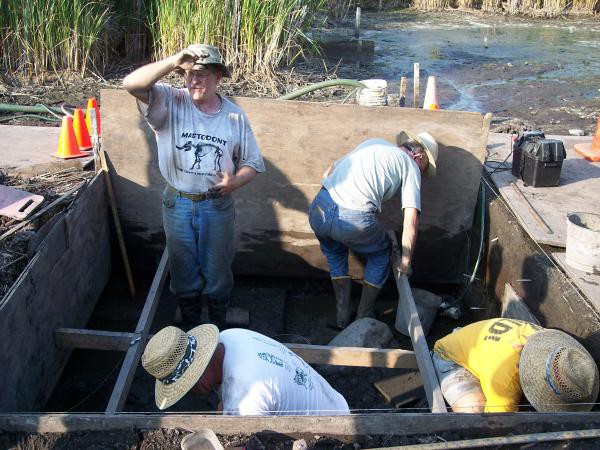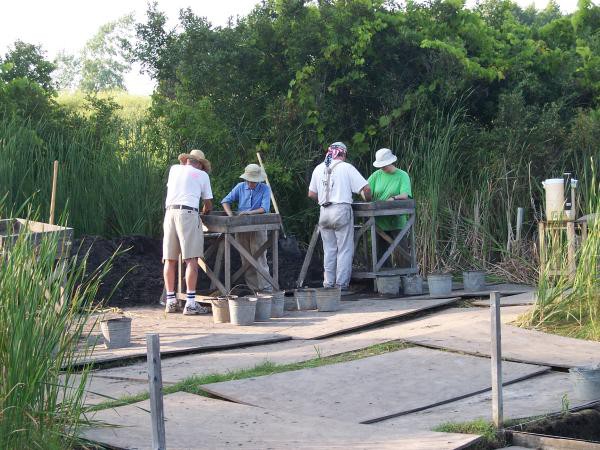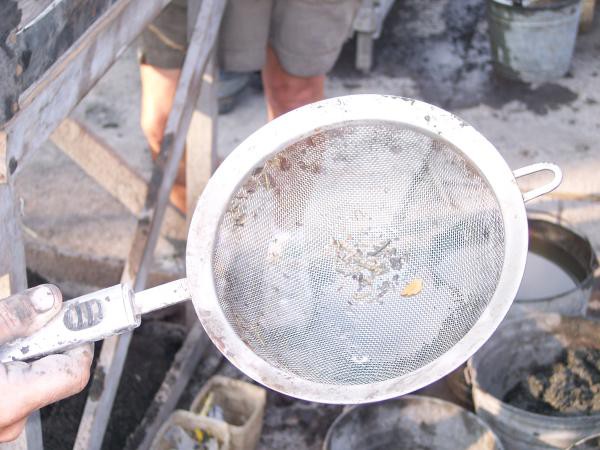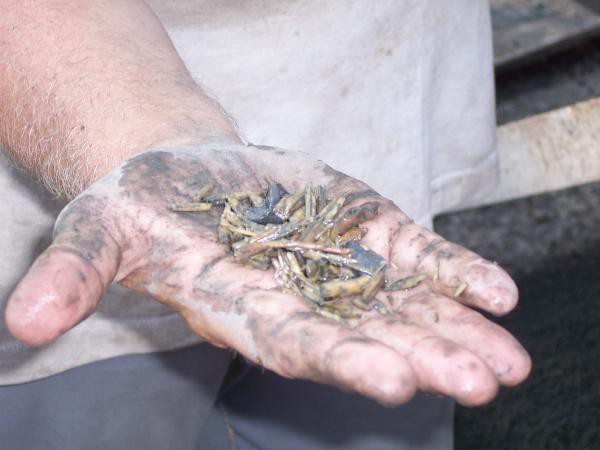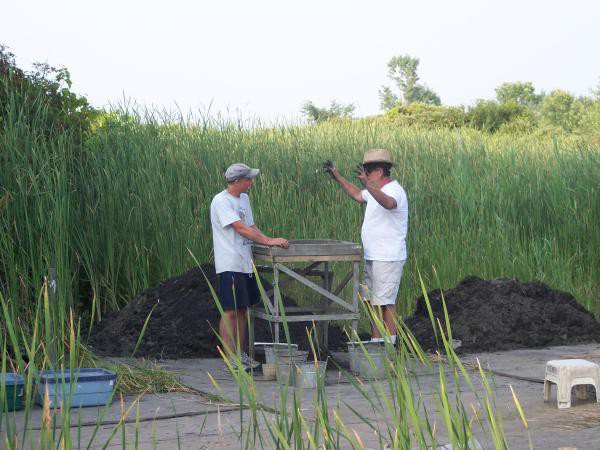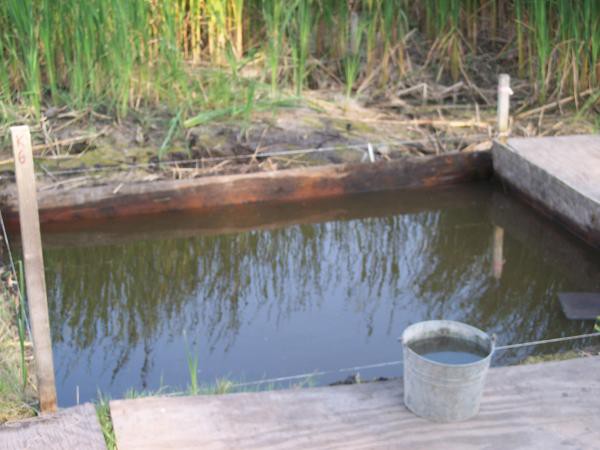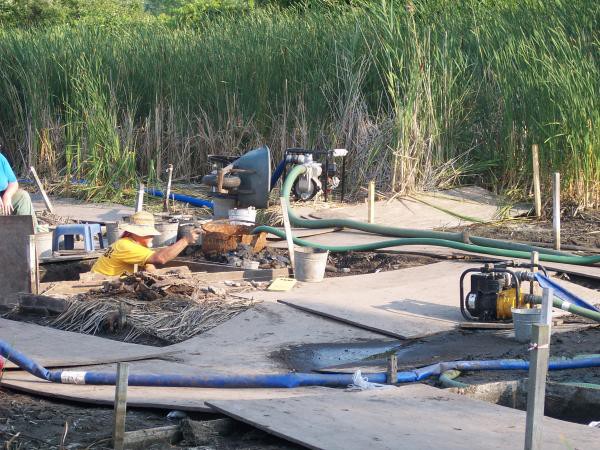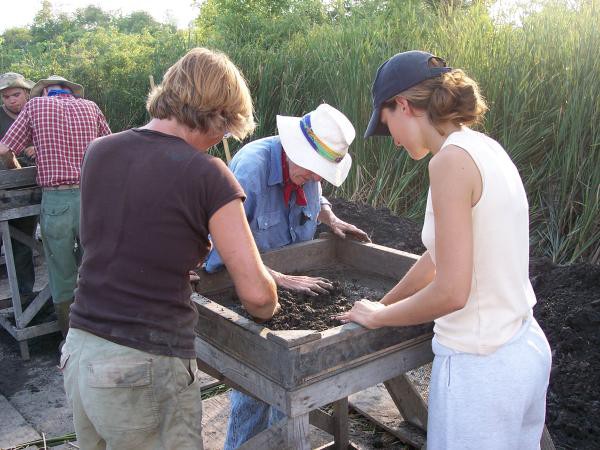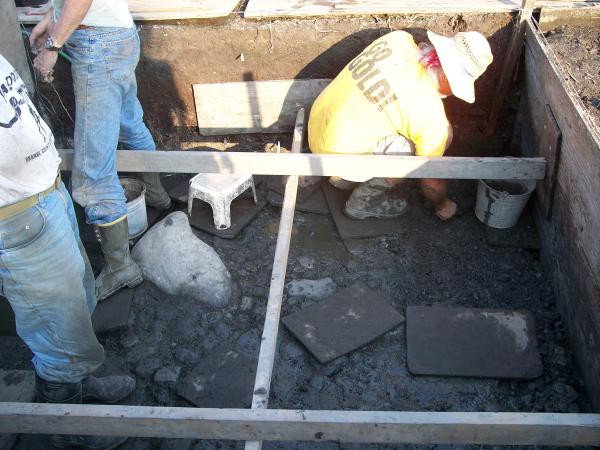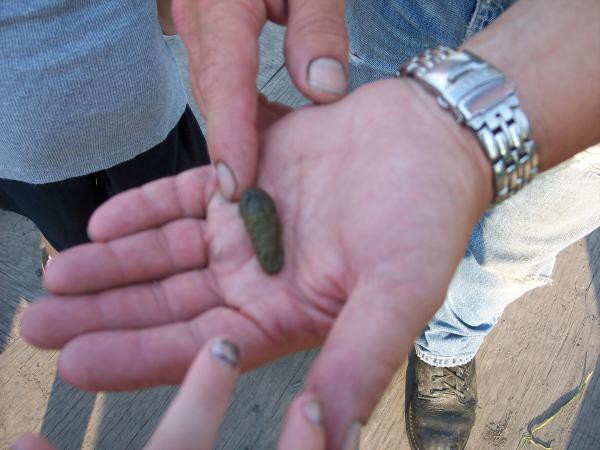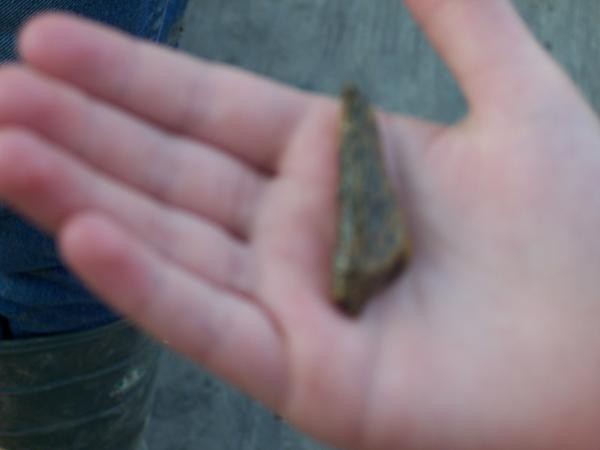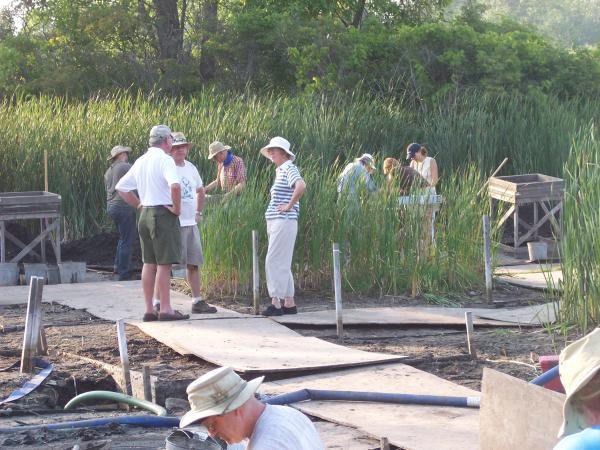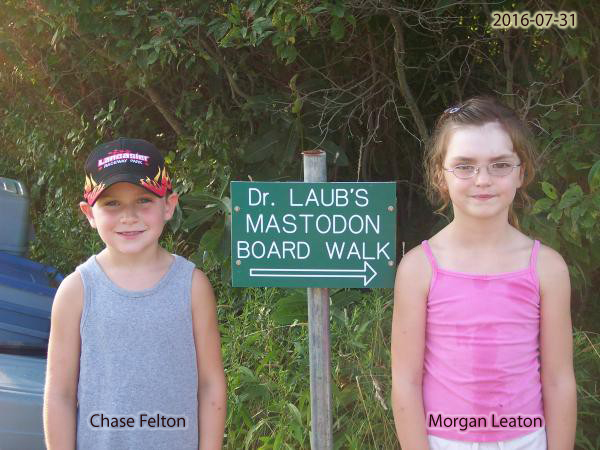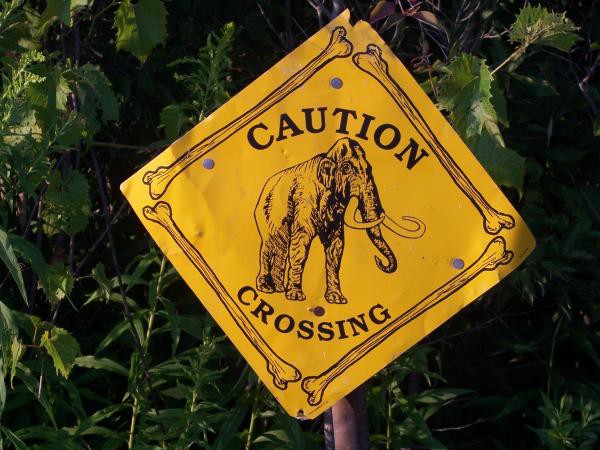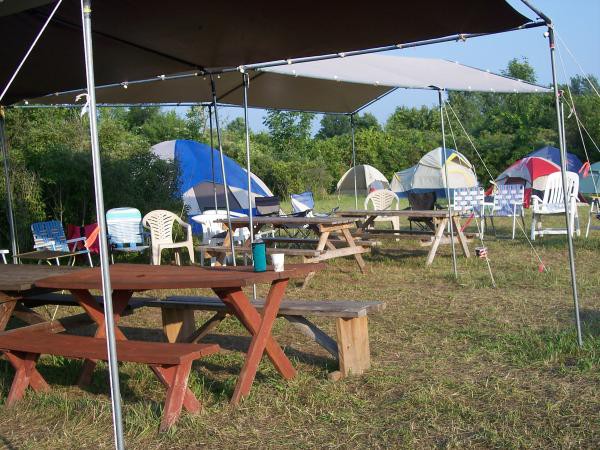Byron Dig at the Hiscock Archeological Site
Pits are dug by volunteer trowelers. Digging is done with a trowel, a kite-shaped metal blade with a handle. The troweler uses this tool to scrape off thin layers of earth, making a flat floor in the pit. As the diggers continue scraping, the floor gets deeper, going down at about four inches a day. Because most pits wind up being three to four feet deep, it can take nine to 12 days to complete a single pit.
Dirt that each troweler scrapes from the pit floor goes into a labeled bucket. Each bucket goes up to a team of sievers who force the dirt through a series of screens to find any small objects that were missed by the troweler. Some of the most important specimens are found in the sieves.
Long wooden stakes are hammered vertically into the ground in a series of east-west and north-south lines. This produces something like a giant checkerboard, with each square marked by four stakes. The lines of the “checkerboard” are like the lines of latitude and longitude on a map, providing the trowlers with a way to mark the location of whatever is found.
Because of the large number of people who work at the dig, they are usually able to keep from two to four pits going at one time. Whenever an interesting specimen is found, it is brought around for the entire crew to see, since everyone has worked as a team to make the discovery.
Click on any small photo to view the larger photo and description.
_ _ _
Read more about the Byron Digs in the Artvoice article "Digging for Mastodons" by Jack Foran.

